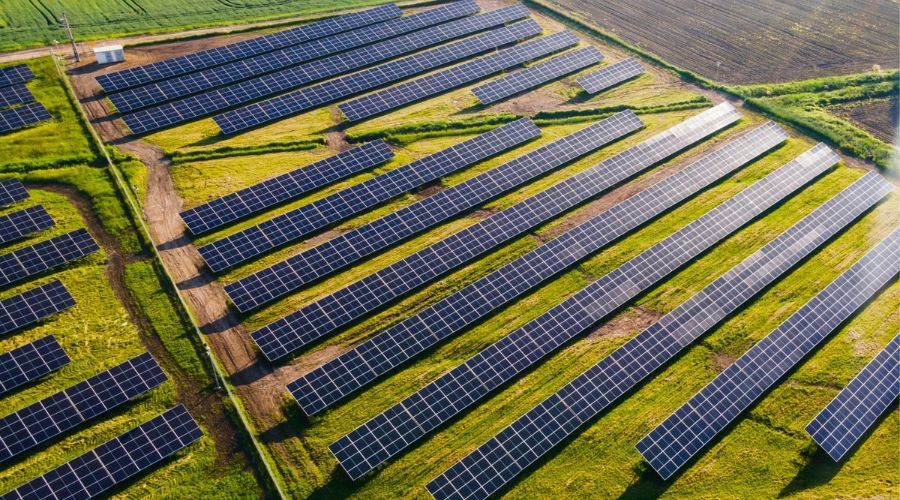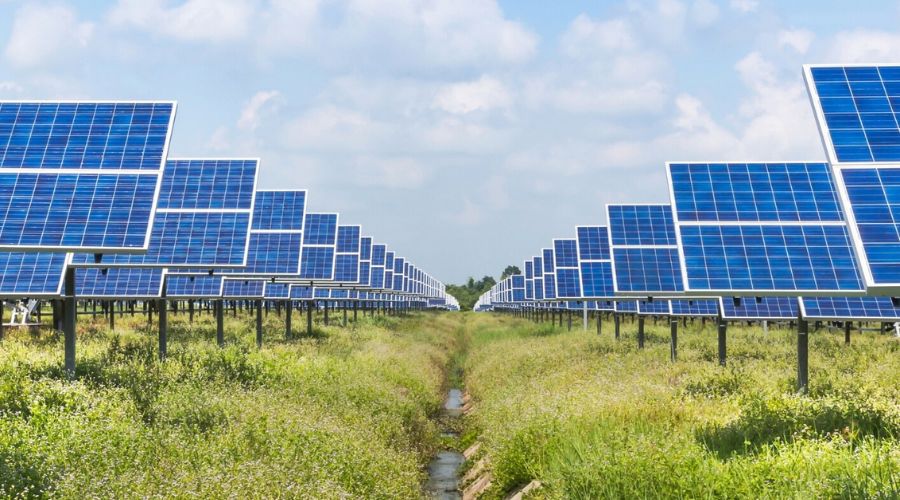Farmers seek innovative solutions to strengthen their financial resilience
10th February 2025
Currently, British farmers are facing mounting challenges, many of which are causing financial strain. More and more are therefore seeking innovative solutions to strengthen their financial resilience.

Their aim is to put their farms on a sustainable financial footing, said Photovolt, developer of utility-scale photovoltaic power plants that delivers clean, renewable energy to the National Grid.
Smart financial planning and risk management have become as crucial to farming success as understanding soil and weather patterns.
A spokesperson for Photovolt said that the UK’s race to net zero provides such an opportunity.
“As a nation, we have set ambitious clean power targets that require a significant increase in the construction of solar energy generation. To make this a reality, developers will need to work with landowners to deliver projects across the country.
“The diversified use of farmland can bolster income for farmers while creating lower-cost, clean renewable energy for farmers and the wider community. In some cases, this revenue stream can prove a vital lifeline for those farms in financial difficulty.
“Farmers we are working with know that in the future, a meaningful proportion of their running costs are now secure thanks to income from leasing land to solar. This is giving them confidence to continue to farm, safe in the knowledge that we will provide a constant and attractive revenue stream.
“However, with incoming NESO reforms at the end of April, those considering such a move have a small window to act.”
Financial resilience – diversify your income stream
Photovolt’s experts added that consistent and reliable revenue streams are proving increasingly difficult for many farms to establish. Allowing for diverse use of farmland can provide exactly this, while still enabling the rest of your holdings to be farmed more effectively and economically.
“With a renewable energy revolution underway in the UK, this presents one of the best opportunities available to farmers for a secure, reliable income stream.
“This would typically involve leasing part of your land to solar developers for a period of 25-40 years, which can provide an opportunity to gain a stable, long-term revenue stream, reducing reliance on traditional agricultural income and ensuring the futureproofing of your land.
“A solar farm lease guarantees income for decades with little to no additional labour required. Installing solar panels is an optimal way to save money in the long term and improve the sustainability of business operations,” they explained.

Land recovery and soil regeneration
Photovolt said that responsible developers deliberately target the lowest quality and lowest yield land on a nominated site.
A spokesperson for the developer added: “This choice ensures the most fertile fields for food production are preserved and enhanced. In our proposals for the Botley West Solar Farm, we have done exactly this, targeting land that has suffered the effects of intensive farming over decades, leaving it increasingly unproductive.
“Once a solar farm’s lifespan has come to an end (typically after about 40 years), this kind of land and soil will have had the time and lack of disruption required to regenerate and return to productive agricultural use.
“The site can also be expected to see significant improvements in biodiversity over the life span of the project, with our proposals, for example, expected to deliver a 70% biodiversity net gain.
“Additionally, a reliable and responsible developer will ensure the selection of fields leased is tailored closely to the needs and priorities of the land itself. They should work closely with you, who knows the land best, to understand the optimal land use approach.”
Dual land use
Photovolt’s experts added that once developments have been built and panels are installed, a number of options exist for how the land can be utilised for additional purposes.
For example, agrivoltaics production can be particularly suitable for crops such as onions, grains, potatoes, root vegetables, as well as strawberries and raspberries. Land can also be used for livestock grazing.
Livestock, typically sheep, can graze around and under solar arrays without damaging the infrastructure, allowing farmers to maintain their livestock operations while benefiting from the additional income from solar energy. This is what has been proposed in areas of Botley West Solar Farm.
NESO update
Farmers currently considering leasing part of their land for solar development should be aware of significant upcoming reforms from the National Energy System Operator (NESO), Photovolt’s team said.
In headline terms, the prioritisation of ‘deliverability’ will mean those projects where landowners have yet to conclude a deal with a developer will move further back in the queue for a grid connection if not concluded by May this year.
The proposed reforms would require applications to be submitted during a designated window at the same time each year and would mean that ‘deliverable projects’ would move ahead in the queue, with land agreements that are already in place being a key part of making a project considered ‘deliverable’.
Additionally, they will also assess the number of projects in a given region, as opposed to nationally. This means NESO could push your connection date back further if there are already a number of realistic projects in the pipeline.
While these reforms will work to prioritise viable and necessary developments, they will also limit the number of applications that developers can make. This will limit the timeframe for farmers to make a decision.
The later that farmers leave it to decide on land agreements, the later a developer can apply and the further back a grid connection date becomes. It is reasonable to expect connection dates as late as the mid-to-late 2030s if agreements aren’t concluded by the end of April, the company explaied.
A spokesperson for Photovolt concluded: “Farmers will need to act to agree land deals now for grid connection dates to be considered in this window. This will enhance a project’s deliverability, improving the chances of NESO granting an earlier grid connection date.
“Delays could mean years of waiting and lost income opportunities. With stricter limitations ahead, securing a connection now could prove crucial for farm viability.”
